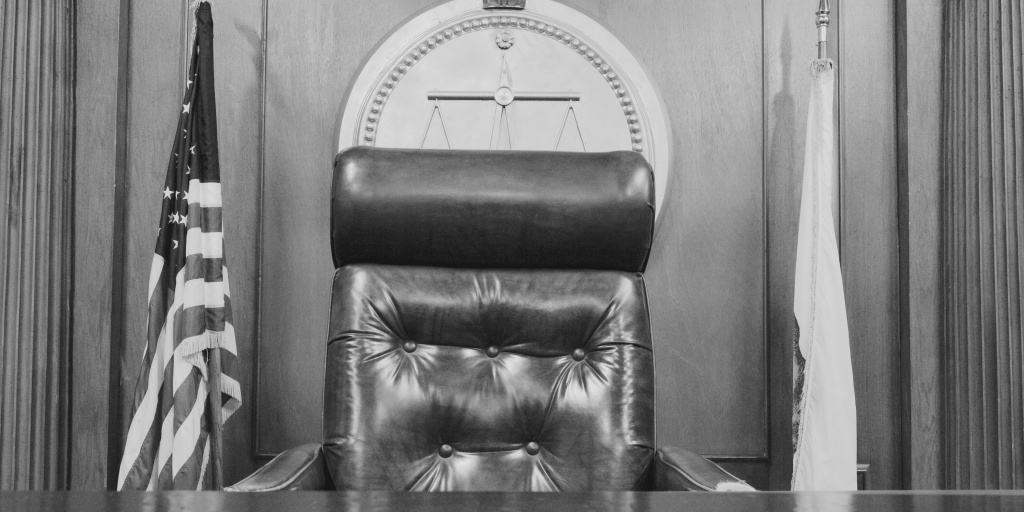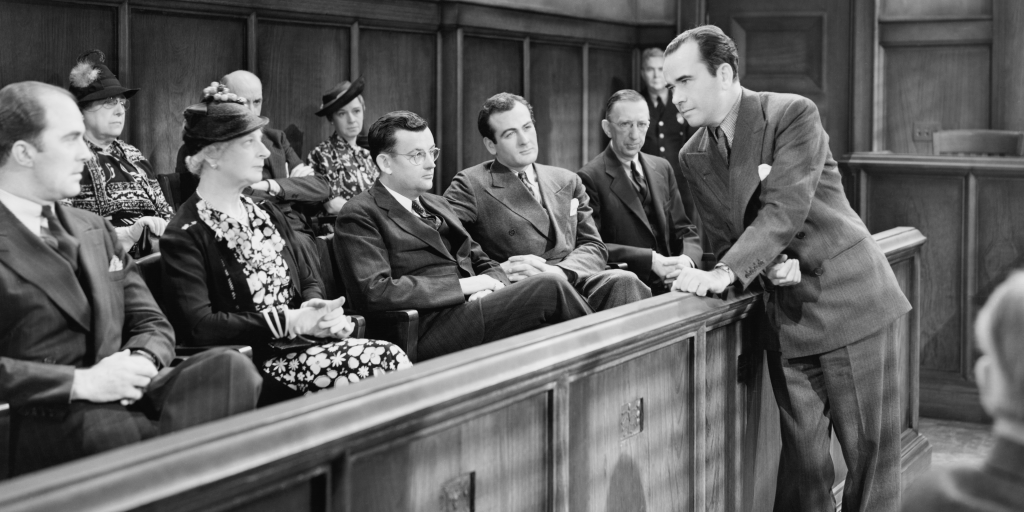Facing criminal charges can be an intimidating ordeal for anyone. Fortunately, the United States Justice System is structured to shield the accused from unwarranted punishment before a fair trial. While each case is unique, the criminal trial process provides every defendant with a systematic approach leading toward a just resolution.
To navigate the complexities of criminal cases, which can demand meticulous legal research, evidence compilation, and adherence to tight deadlines, attorneys are adopting strategies to streamline the process. A practical approach is utilizing legal timeline software. This tool helps attorneys ensure that all necessary materials are prepared for the trial, ultimately contributing to more favorable outcomes.
The progression of criminal prosecution unfolds through various stages until it reaches a sentence. For individuals facing criminal charges, understanding the criminal case timeline empowers them to make informed decisions regarding their defense strategy, whether it involves accepting a plea deal or proceeding to trial. This awareness also aids legal representatives in anticipating important milestones and deadlines, facilitating effective case management, and ensuring timely actions, such as evidence gathering or legal motions.
The Players of a Criminal Court Case

A criminal case trial is a legal proceeding in which evidence is presented, witnesses are examined and cross-examined, and arguments are made to determine the guilt or innocence of an individual accused of committing a crime
The key people involved in criminal case trials include:
The Judge
The presiding judicial officer of the judge is responsible for ensuring that the trial proceeds in accordance with the law. The officer oversees the proceeding to guarantee proper conduct, ensuring adherence to the rules and the respect of everyone’s rights.
The judge receives and considers the evidence presented by the parties, listening to their witnesses. Subsequently, the judge is tasked with delivering a verdict, determining whether the accused is deemed “guilty” or “not guilty.” If a guilty verdict is reached, the judge determines the appropriate sentence or punishment for the accused.
The Prosecutor
The criminal and penal prosecuting attorney or the prosecutor is the legal representative of the government or the state. He or she is responsible for bringing the case to court against the accused. This lawyer’s role is to present compelling evidence that establishes the guilt of the accused “beyond a reasonable doubt.”
Defense Attorney
The defense attorney’s responsibility is to advocate for the accused, safeguarding their rights throughout the legal proceedings. This lawyer aims to identify flaws in the evidence presented by the criminal and pending prosecuting attorney, striving to demonstrate either the innocence of the accused or, if applicable, that they merit the most lenient sentence.
Defendant
The person accused of committing a crime and facing trial. The defendant has the right to be presented during the trial, to be represented by an attorney, and to confront witnesses.
The Jury
In many criminal court trials, a group of individuals selected as jurors is responsible for determining the verdict. The jury listens to the evidence instructions from the judge and arguments from both the prosecution and defense before deciding on guilt or innocence.
Witnesses
Witnesses play a crucial role in elucidating events by recounting what they observed and heard. When witnesses share their firsthand accounts, it is referred to as “testifying.” Testimonials may come from various individuals, including the police, victims, or any other relevant person. The accused also has the option to testify and present their perspective, although they are not obliged to do so.
Unless witnesses are experts in a specific field, they typically cannot express their opinions about the events. Instead, their role is to describe precisely what they witnessed and heard.
Besides the accused’s legal representative, these participants work together to secure a fair and equitable resolution of the criminal case trial.
The Order of Events in a Criminal Case and the Legal Process
Below are the events that should be input into a litigation timeline software to track the progression of a criminal case. Legal experts, jurors, and witnesses involved in the case may be invited to contribute their insights or annotations to the case timeline within the software. Further, pieces of evidence may be attached for presentation during the court proceedings.
These stages play a pivotal role in the process of making informed decisions regarding defense strategy, considering a plea, or advocating for the most lenient sentence.Arrest and Initial Investigation
A criminal court prosecution typically begins with an arrest by a police officer or law enforcement. A police officer may arrest a person if (1) the officer observes the person committing a crime; (2) the officer has probable cause to believe that a crime has been committed by the person; (3) the officer makes the arrest under the authority of a valid arrest warrant. After the arrest, the police book the suspect. When the police complete the booking process, they place the suspect into custody. If the suspect committed a minor offense, the policy may issue a citation to the suspect with instructions to appear in court at a later date.
In these segments of the legal timeline, the defense lawyer can request and acquire information pertinent to the case from law enforcement. This includes police reports, evidence, and other relevant details. This process involves coordinating with the officer in charge, allowing them to attach these details to the “arrest” or “initial investigation event” in the timeline.
Charging Decision and Case Entry
After the investigation reaches its pinnacle, the authorities must decide whether to formally press charges against an individual. During this stage, law enforcement and prosecuting attorneys assess the available evidence and determine if there is sufficient legal basis to initiate formal legal proceedings against the accused. Once the decision to charge is made, the case is officially entered into the legal system, making the beginnings of the formal criminal process.
Within the trial timeline software, the legal team overseeing the case can generate a new event, specifying the date when the charging decision was reached. This event should encompass crucial details including the prosecuting decision and any pertinent information that influenced the charging decision. Charging documents can be attached to this event and can be sent to key participants such as law enforcement officials, prosecuting attorneys, and other pertinent parties.
Arraignment: Start of the Criminal Trial Process

Arraignment serves as the initial appearance, marking the start of the criminal trial proceedings. At this stage, the accused is informed of the charges against them, and they are asked to enter a plea‒ typically “guilty”, “not guilty” or “no contest.”
During the arraignment, the court may address matters concerning bail or release. The accused is also informed of their rights, including the opportunity to request a public defender.
To incorporate the arraignment event into the timeline software, create an event specifying the start date and detailing the charges filed and any notable occurrences. Include the plea entered by the accused and attach relevant documents like the arraignment record or those related to bail or release conditions. You may share these critical events with the accused, legal representatives, and the presiding judge for related annotations.
Preliminary Hearing or Grand Jury Proceedings
Typically, the government initiates criminal charges through either a “bill of information” obtained via a preliminary hearing or a grand jury indictment. In the federal system, indictments are mandatory, but states have the flexibility to opt for either method. Both preliminary hearings and grand juries aim to establish the presence of probable cause. Without a probable cause determination, a defendant is not compelled to go to trial.
A preliminary hearing, also known as a preliminary examination, is an adversarial process where attorneys question witnesses, and both sides present arguments. The judge then renders the final decision on probable cause. In contrast, a grand jury hears exclusively from the prosecutor. The grand jury has the authority to summon its witnesses and request additional investigations. Afterward, the grand jury assesses whether adequate evidence exists to issue an indictment against the defendant.
Integrate this occurrence into the timeline creation software by ensuring the inclusion of dates and locations. Attach pertinent documents like court notices, hearing transcripts, or any paperwork related to the court hearings or grand jury proceedings. Enable collaboration within the software for the attorneys, the accused, and witnesses facilitating the exchange of notes, updates, and relevant information about the event.
Pre-Trial Motions: Shaping the Parameters
As the trial approaches, attorneys participate in strategic discussions known as pre-trial motions. Pre-trial motions are formal requests made by the parties involved before the trial proceedings begin. These motions are usually submitted in writing to the court and aim to address specific legal issues or seek rulings that can influence the course of the trial.
When creating the pre-trial motion event in the timeline software for lawyers, it is essential to clearly define the pre-motion event, specifying its nature such as Motion to Dismiss, Motion for Discovery, or any relevant pre-trial motion event. Make sure to record the date when the pre-trial motion is officially filed with the court and attach the filed pre-motion document, including the motion papers, affidavits, legal briefs, and any supporting exhibits or evidence. Additionally, incorporate details regarding the service of notice, response filing, and hearing dates. Lastly, document the court’s decision date on the pre-moton and the nature of the decision, whether it’s a grant, denial, or modification of the requested relief.
Trial: Stepping into the Courtroom
When attempts at resolution through negotiation, settlement, or pre-trial motions are unsuccessful, a case then proceeds to a trial. During a trial, the judge or jury is tasked with determining whether the defendant is guilty or not guilty. The prosecution carries the burden of proof in criminal trials, necessitating them to establish, beyond a reasonable doubt, that the defendant committed the alleged crimes. In most criminal cases, the defendant is constitutionally entitled to a jury trial. The ultimate decision of guilt or innocence is made by the jury or judge, who carefully considers opening and closing statements, the examination and cross-examination of witnesses, and jury instructions. If the jury is unable to reach a unanimous verdict, the judge may declare a mistrial, leading to the case’s dismissal or the selection of a new jury. Upon a guilty verdict the judge or jury, the court proceeds to sentence the defendant.
Throughout the trial, the timeline software should effectively present accumulated data from previous legal proceedings, aligning it with the strategic plan devised by the legal team. Before the trial make sure that the trial timeline has essential details such as the case name, parties involved, significant dates, pre-trial events, pertinent documents, and a list of witnesses. Additionally, the software should facilitate the creation of the trial event, indicating trial dates, locations, and other preparatory activities. Its functionality should extend to aiding in trial proceedings, including tasks such as managing opening statements and witness testimonies, conducting cross-examinations, and facilitating closing arguments.
Verdict: The Gavel’s Resonance

During a verdict, the judge or jury carefully considers all the evidence presented during the trial, the arguments made by both the prosecution and the defense, and any relevant legal instructions provided by the judge. The goal is to reach a unanimous decision in jury or a majority decision in some jurisdictions.
If the verdict is “guilty” it signifies that the accused has been found responsible for the alleged crimes. In contrast, a verdict of not guilty” indicates the prosecution failed to prove the defendant’s guilt beyond reasonable doubt.
Create a verdict entry in the timeline tool and include the date and time of the verdict pronouncement. Document whether the verdict is “guilty” “or not guilty.” An official report transcript of the verdict pronouncement or any written documentation provided by the judge or jury should also be attached.
Sentencing: Weighing the Scales of Justice
When a defendant is found guilty in the verdict, the sentencing phase follows. During this phase, the court determines the appropriate punishment for the convicted defendant. To arrive at a fitting sentence, the court considers multiple factors, such as the nature and severity of the crime, the defendant’s criminal history, the defendant’s personal situation, and the degree of remorse expressed by the defendant.
When adding the sentencing event to the legal timeline software, be sure to specify the sentencing date and courtroom venue. Additionally, attach relevant sentencing documents, submissions, or reports to offer contextual information for the sentencing decisions. Consider including victim impact statements, and document the specifics of the sentencing decision, noting the type of the imposed punishment.
Appeals: Challenging an Unfavorable Verdict
Upon receiving an unfavorable verdict, the legal process may persist through the avenue of appeals. This phase provides an opportunity to scrutinize the trial proceedings, aiming to detect any legal errors that might influence the final outcome. Appeals serve as a safeguard, upholding the integrity of the judicial process.
In the appeal event in the litigation timeline, specify the higher court or appellate court to which the appeal is presented. Clearly outline the legal basis for the appeal and attach crucial documents associated with the appeal, including the notice of appeals, legal briefs, and any supporting evidence.
Building the Stages and Understanding the Process with TrialLine

Simplifying the tasks of legal representatives and incorporating technology into court proceedings are increasingly prevalent and under exploration. Among the digital tools extensively utilized in court cases, legal timeline software stands out.
While the choice of how to employ such a tool lies with the legal representative, finding one that is user-friendly and provides a comprehensive overview of a case can pose a challenge. However, with the proliferation of many tools, it has become easier to identify which one suits a legal firm best. Take TrialLine, for example. TrialLine is an easily navigable, cloud-based timeline software designed for attorneys. Users can explore the app for free by signing up for a 14-day trial. Additionally, TrialLine offers users the opportunity to schedule a free demonstration to assist them in getting started with the tool.
Protect your firm against malpractice charges, manage your reputation, and present your case comprehensively with TrialLine.
Disclaimer: The information provided on this website does not, and is not intended to, constitute legal advice; instead, all information, content, and materials available on this site are for general informational purposes only. Information on this website may not constitute the most up-to-date legal or other information.






